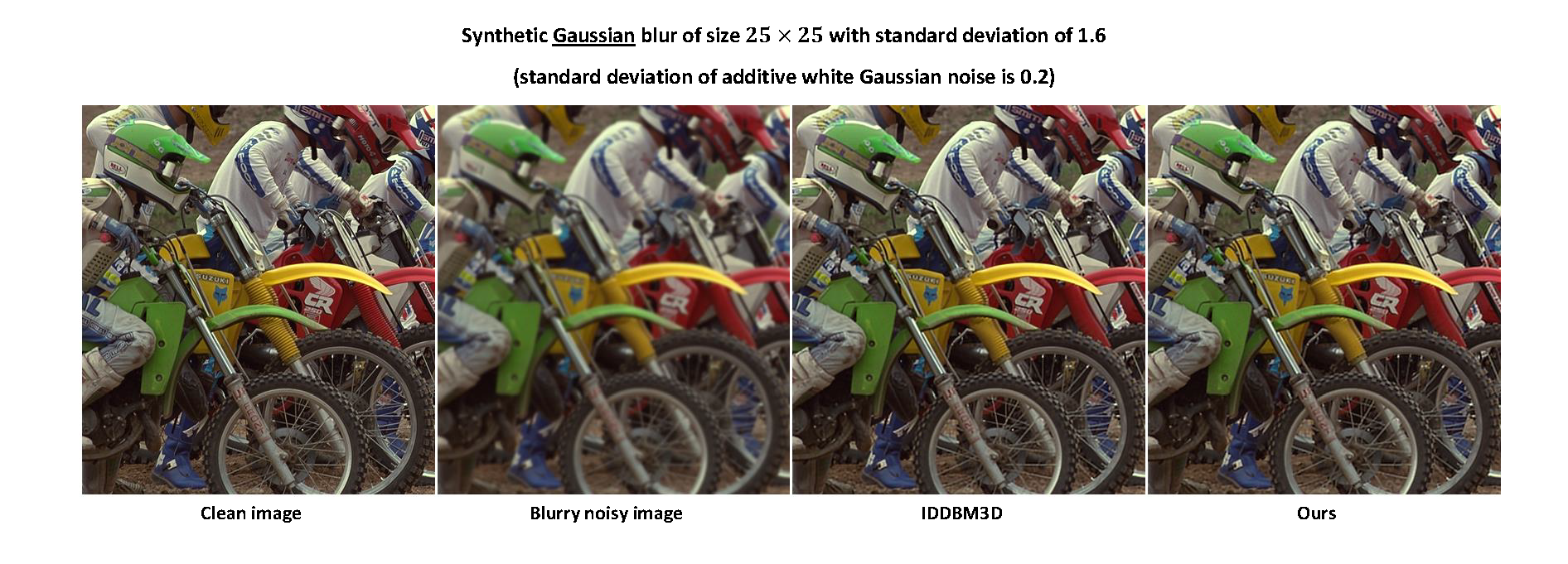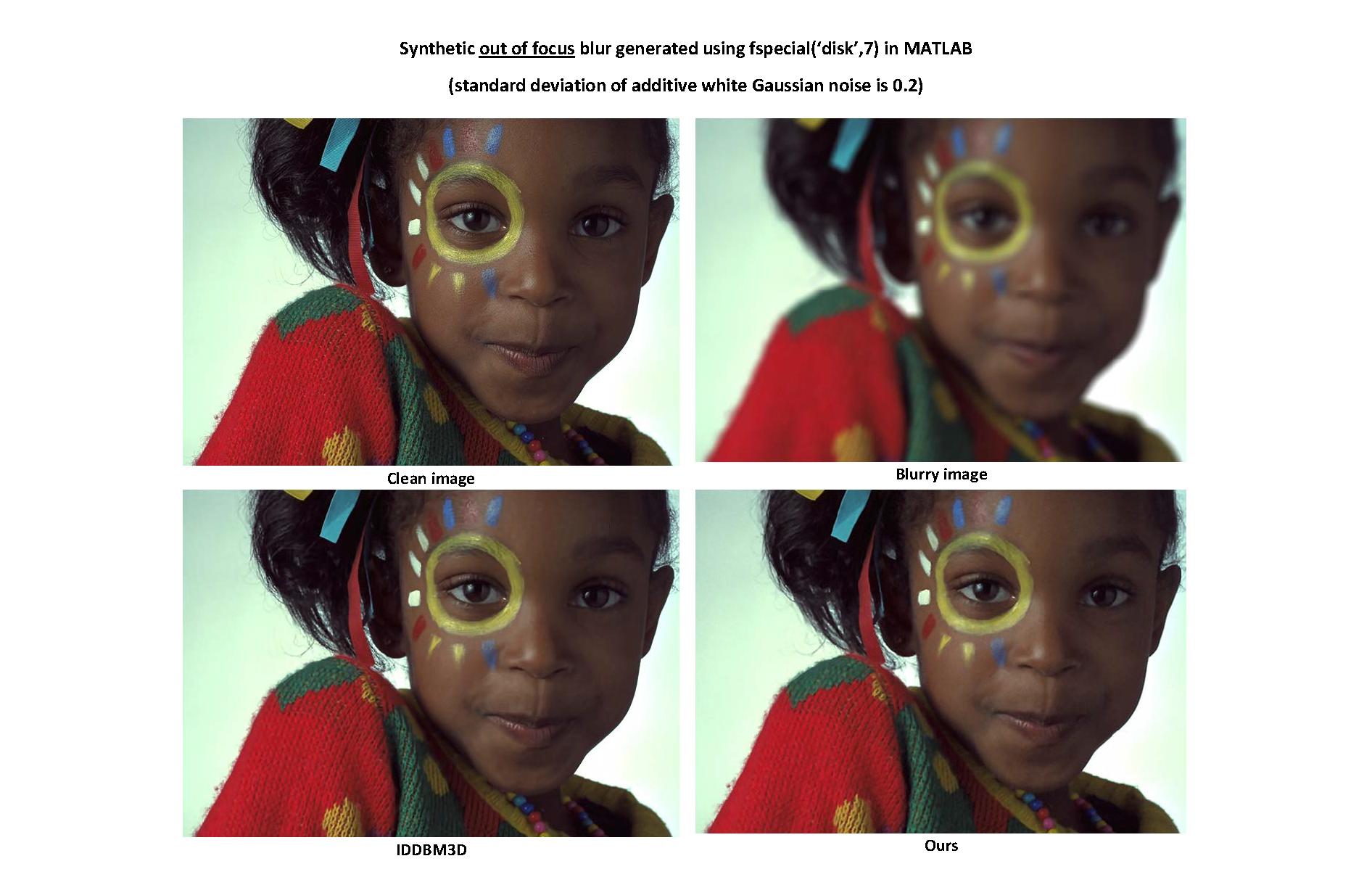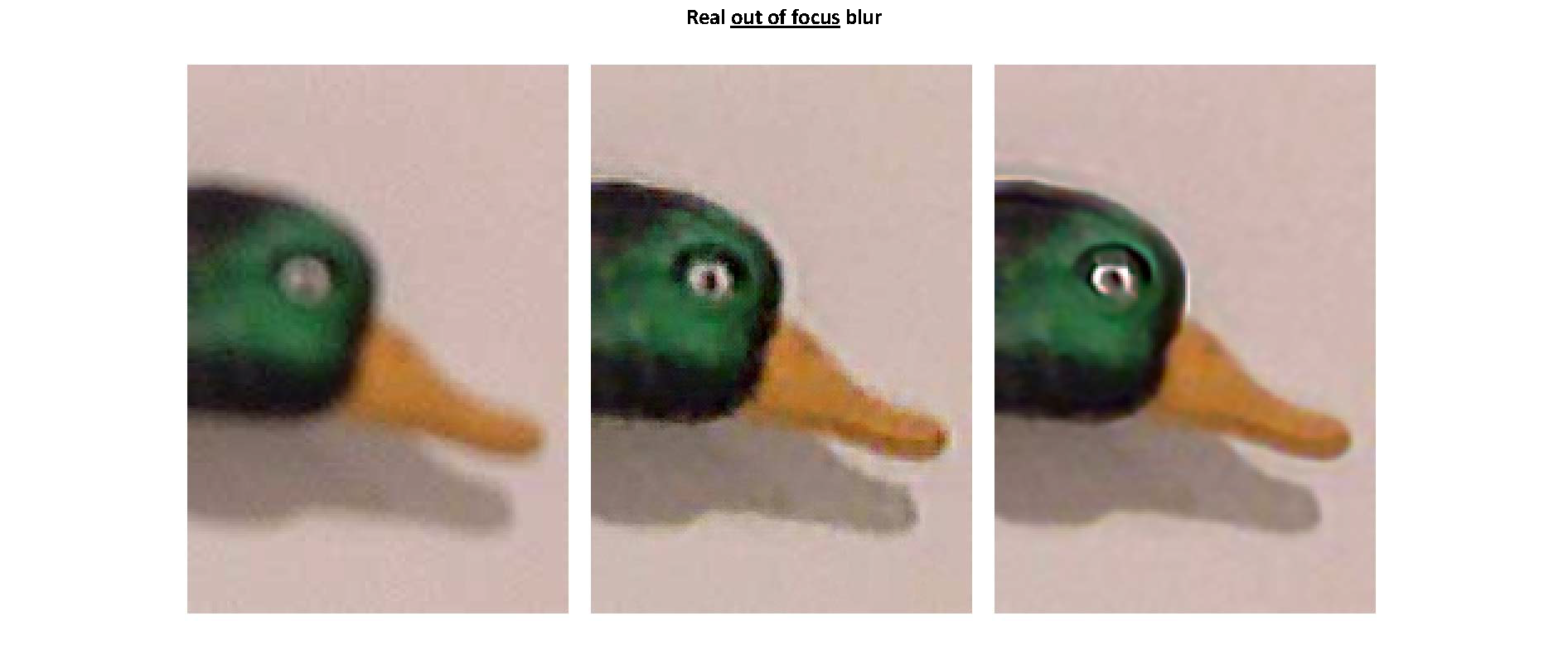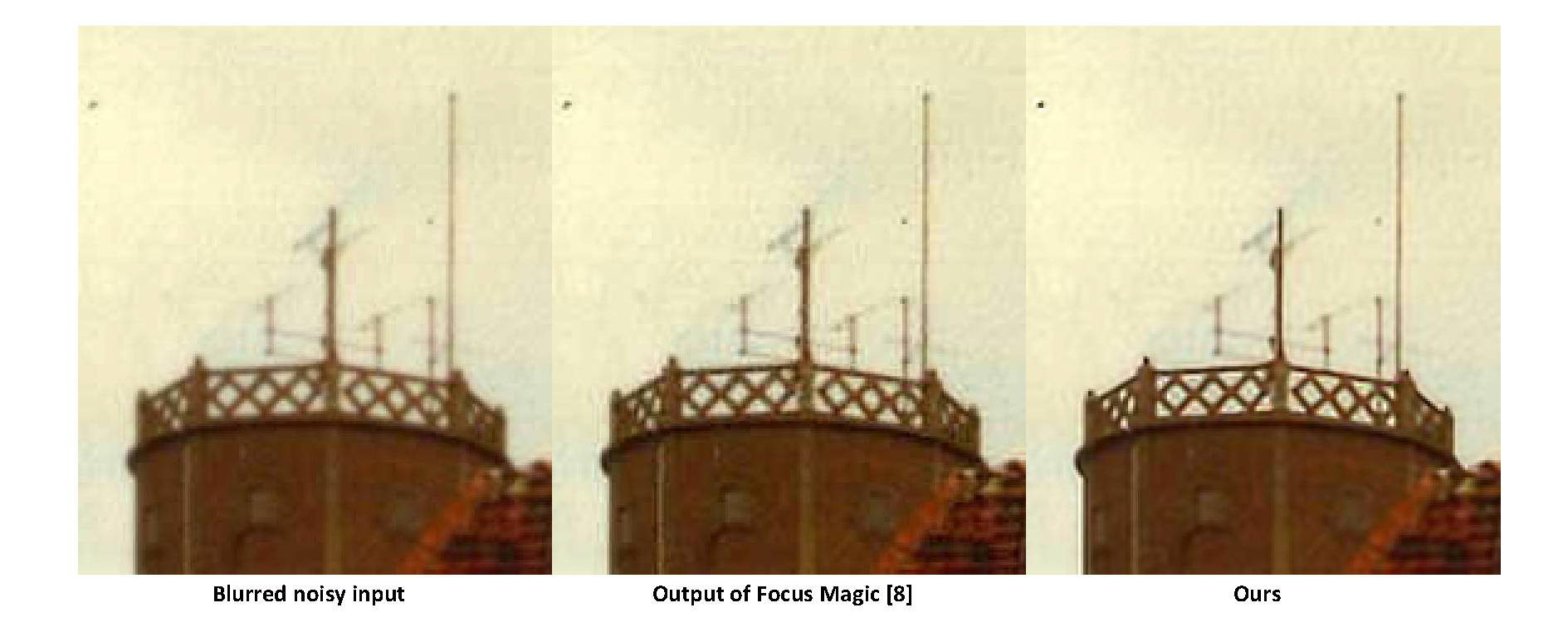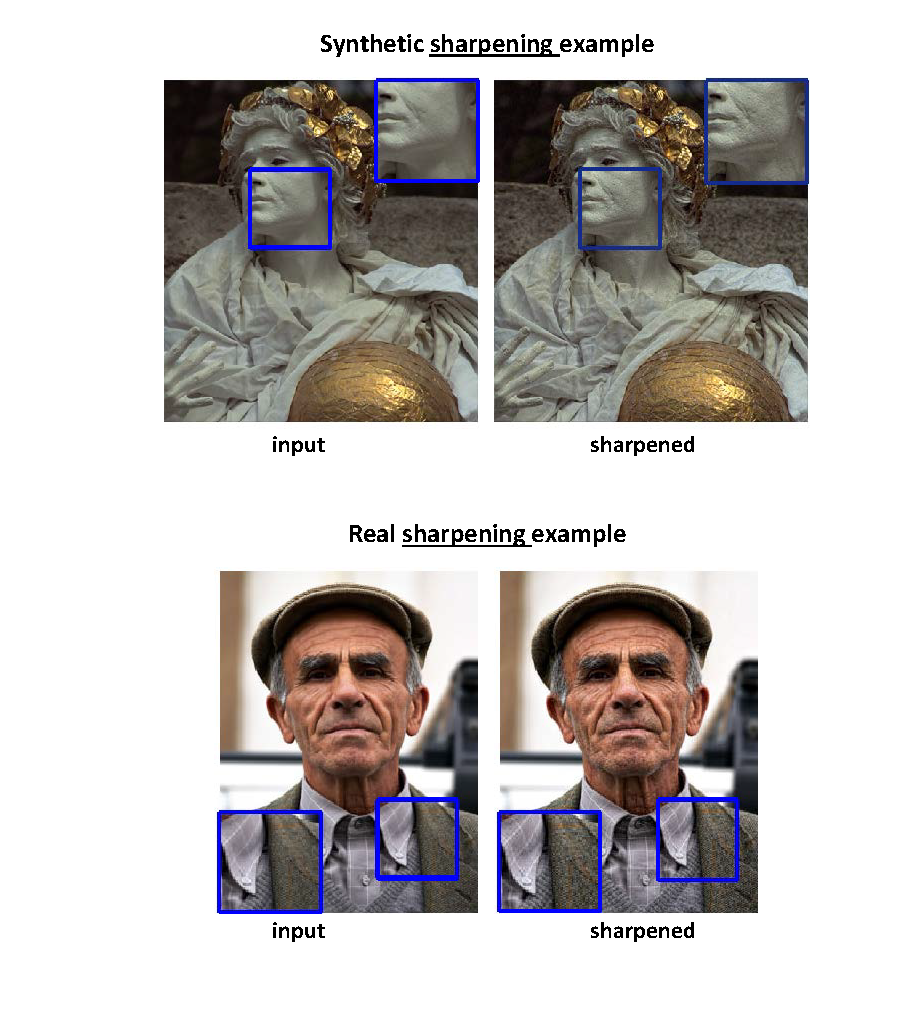| |
 |
UNIVERSITY
OF CALIFORNIA,
SANTA CRUZ |
|
|
| |
|
|
| |
A General Framework for Regularized, Similarity-based Image Restoration |
|
| |
|
|
| |
Abstract |
|
| |
Any image can be represented as a function defined on a weighted graph, in which the underlying
structure of the image is encoded in kernel similarity and associated Laplacian matrices. In this paper,
we develop an iterative graph-based framework for image restoration based on a new definition of the
normalized graph Laplacian. We propose a cost function which consists of a new data fidelity term
and a regularization term derived from the specific definition of the normalized graph Laplacian. The
normalizing coefficients used in the definition of the Laplacian and the associated regularization term
are obtained using fast symmetry preserving matrix balancing. This results in some desired spectral
properties for the normalized Laplacian such as being symmetric, positive semi-definite, and returning
zero vector when applied to a constant image. Our algorithm comprises of outer and inner iterations,
where in each outer iteration, the similarity weights are recomputed using the previous estimate and the
updated objective function is minimized using inner Conjugate Gradient (CG) iterations. This procedure
improves the performance of the algorithm for image deblurring, where we do not have access to a good
initial estimate of the underlying image. Moreover, the specific form of the cost function allows us to
render the spectral analysis for the solutions of the corresponding linear equations. Also, the proposed
approach is general in the sense that we have shown its effectiveness for different restoration problems
including deblurring, denoising, and sharpening. Experimental results verify the effectiveness of the
proposed algorithm on both synthetic and real examples.
Overview
Experimental Results
MATLAB Code
See more details and examples in the following papers:
|
| | |
| |
Overview of the proposed method |
|
| |
|
|
| |
| |
Deblurring examples |
|
| |
|
| |
|
| |
|
| |
|
| |
|
| |
|
| |
|
| |
|
| |
| |
Sharpening examples |
|
| |
|
| | |
| |
MATLAB Code |
|
|
| |
This software is provided for non-commercial research purposes only. Use at your own risk. No warranty is implied by this distribution. Copyright © 2014 by University of California.
Download
- File updated: Oct 30 2014
|
| | |
| |
References |
| [1] A. Buades, B. Coll, and J. M. Morel, "A Review of Image
Denoising Methods, with a New One," Multiscale Modeling and Simulation, vol. 4, no. 2, pp. 490-530,
2005.
|
| [2] P. Milanfar, "A tour of modern image filtering," IEEE, Signal Processing Magazine, vol. 30, no. 1, pp. 106-128, 2013.
|
| [3] R. Sinkhorn and P. Knopp, "Concerning nonnegative matrices and doubly stochastic matrices," Pacific J. Math, vol. 21, no. 2, pp. 343-348, 1967.
|
| [4] A. Danielyan, V. Katkovnik, and K. Egiazarian, "BM3D frames and variational image deblurring," IEEE Transactions on Image Processing, vol. 21, no. 4, pp. 1715-1728, April 2012.
|
| [5] S. Cho and S. Lee, "Fast motion deblurring," ACM Transactions on Graphics (SIGGRAPH ASIA), vol. 28, no. 5, p. article no. 145, 2009.
|
| [6] D. Krishnan and R. Fergus, "Fast image deconvolution using hyper-laplacian priors," NIPS, pp. 1033-1041, 2009.
|
| [7] Q. Shan, J. Jia, and A. Agarwala, "High-quality motion deblurring from a single image," ACM Transactions on Graphics (SIGGRAPH), vol. 27, no. 3, pp. 73:1-73:10, Aug. 2008.
|
| [8] P. A. Knight and D. Ruiz, "A fast algorithm for matrix balancing,"
IMA J. Numer. Anal., vol. 33, pp. 1029-1047, 2013.
|
| [9] K. Dabov, A. Foi, V. Katkovnik, and K. Egiazarian, "Image denoising
by sparse 3-D transform-domain collaborative filtering," IEEE Trans.
Image Process., vol. 16, no. 8, pp. 2080-2095, Aug. 2007.
|
| [10] Focus Magic software
|

